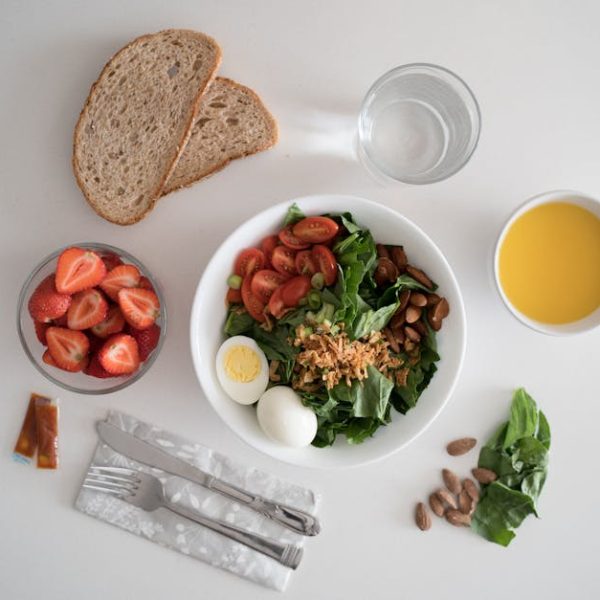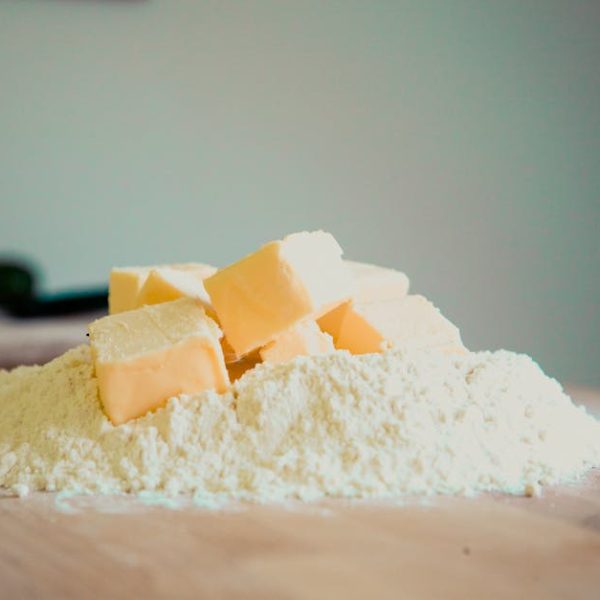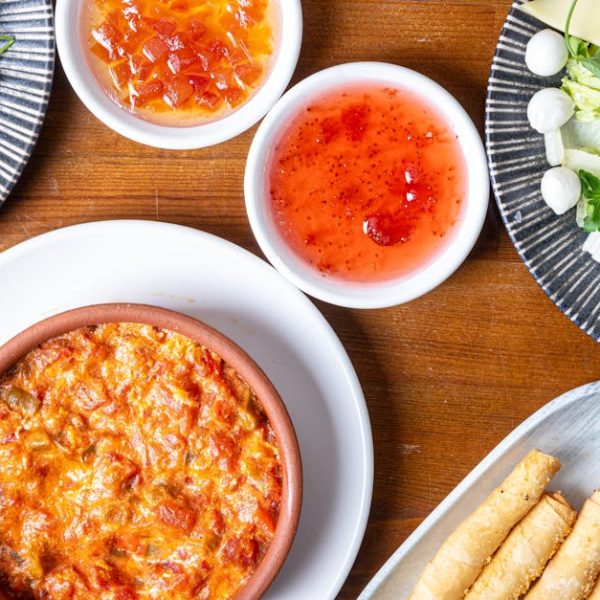Before we wade into this chilling topic, it’s essential to understand that not every salad is created equal — at least not when it comes to freezing. The general rule is that salads, particularly those having a high content of water, don’t respond well to freezing. These mainly include fruit salads and those where watery vegetables like lettuce, cucumber, or tomatoes dominate. The primary culprit is water, which expands when frozen. This can lead to drastic texture changes and even flavour alterations that might leave your palate unsatisfied. And let’s not forget about the salad dressing, which can morph into an unexpected taste post-freezing. So, if frost must touch your salad, it’s best to leave it undressed.
But don’t be disheartened! Many salads actually freeze quite well. Pasta salads and grain salads, for example, hold up great in frozen conditions. And vegetable salads, with sturdier stars like kale or Bell peppers, can also confidently brave the cold. Other resilient ingredients include legumes like chickpeas or kidney beans and proteins such as chicken or tofu. Freezing these salads offers convenience for future meals, reduces waste, and ensures no hasty supermarket runs. The trade-off, however, could be a slight change in texture and a fresh taste that’s not as vibrant.
Once you’ve decided on the type of salad you’ll freeze, the prepping phase begins. Properly preparing your salad is crucial in guaranteeing it tastes just as good post-thaw. Start by cooling your salad in the refrigerator before surrendering it to the freezer. Consider portioning it into individual servings to avoid unnecessary freeze-thaw cycles. Airtight containers would be your salvation here, protecting your salad from freezer burn and unexpected tastes. And don’t forget to arm yourself with a marker to label these containers with the freezing date – you wouldn’t want to serve a leftover relic to your guests.
Next comes the thawing chapter. The thawing process could make or break your salad experience. Generally, thawing in the refrigerator proves best. This slow thawing process helps maintain the texture and taste of your salad. As it defrosts, don’t forget to show it some love by stirring it occasionally. This helps distribute those cold spots evenly. Now when it comes to serving your thawed salad, waiting for its encore, remember to garnish it with dressing or sauce post-thaw. This guarantees your salad isn’t soggy and amplifies its taste.
Lastly, for those unfreezable salads, all hope is not lost. Some creative culinary solutions can still save the day. Don’t bid farewell to those non-freezable salad ingredients just yet; repurpose them in smoothies, soups or stir-frys instead. These brilliant alternatives not only allow you to savour your salad ingredients but also contribute to reducing food waste. As the old saying goes, there is more than one way to eat a salad.
As with all culinary quests, freezing salads is a matter of experimentation. So, don a culinary lab coat and let the kitchen be your scientific playground. Your perfect frozen salad awaits discovery.
Understanding the General Rule for Freezing Salads
Let’s break down the science of freezing for you! When you freeze salads high in water content, the water inside the vegetables or fruits expands, changing the texture and possibly even the taste. The unfortunate result? A soggy, somewhat tasteless mess once thawed. The usual suspects that fall into the Don’t Freeze category are:
- Cucumbers
- Tomatoes
- Iceberg lettuce
- Watermelon
- Strawberries
Additionally, remember to hold off using salad dressing until you’re ready to serve the thawed salad. Why? Many dressings don’t respond well to freezing and might change in texture or taste.
Pro Tip: Always freeze salads without dressing. It keeps the texture and taste intact.
Types of Salad You Can Freeze
Not all salads are subject to this icy doom! There are some, like pasta salads, grain salads, or salads packed with hearty veggies like kale, that can be frozen without an issue.
Here are a few recipes worth trying:
- Quinoa Salad with Roasted Vegetables
- Pasta Salad with Broccoli and Peppers
- Kale Salad with Chickpeas and Tofu
❄Freezing Pros:
- Convenience: Make ahead meals ready when needed.
- Waste Reduction: Less spoiled food requiring disposal.
❄Freezing Cons:
- Potential Texture Changes: Some salads may get a bit soggy.
- Less Fresh Taste: Frozen salads might lack the vibrant, fresh taste of never-frozen counterparts.
Prepping Salad for Freezing
A successful frozen salad begins with careful preparation. First, allow your salad to cool in the refrigerator before freezing it. For storage, airtight containers are your best friends. Remember to divide the salad into individual servings to avoid multiple freeze-thaw cycles.
Your Salad Freezing Checklist:
- Cool the salad before freezing.
- Use airtight containers for storage.
- Label containers with the date frozen.
Thawing and Eating Frozen Salad
Now, it’s time to defrost and serve your salad. Generally, the refrigerator is the best place to do this, as it allows the salad to thaw slowly and retain most of its taste and texture. Once thawed, add dressings or sauces, and serve promptly.
Your Thawing Checklist:
- Thaw in the refrigerator.
- Stir the salad occasionally during thawing.
- Add dressings and sauces post-thaw.
- Consume promptly for the best taste.
Creative Solutions for Salads That Don’t Freeze Well
Don’t let salads that don’t take to freezing well go to waste. Here are some creative, tasty ways to reuse them:
- Green smoothies
- Vegetable soups
- Stir-fried dishes
Pro Tip: These solutions not only add variety to your diet, they are excellent means to reduce food waste!
Embrace the cold with the salads that can, and find creative ways to repurpose those that can’t. Happy freezing!
Key Takeaway:
- Salads with high moisture content, such as those made from fruits and vegetables like cucumbers, tomatoes, and iceberg lettuce, typically aren’t suitable for freezing due to textural and taste alterations caused by water expansion when frozen.
- Salads that freeze well include pasta salad, grain salad, and salads containing hearty vegetables like kale. Freezing such salads offers convenience and reduces waste but may slightly alter the texture and taste.
- Proper preparation for salad freezing includes cooling before freezing, storing in airtight containers, and labelling the freeze date. Ideally, salads should be thawed in the refrigerator and dressed post-thaw for maximum taste and texture.
- Creative alternatives for salads that don’t freeze well can include incorporating them into smoothies, soups, or cooked dishes, which is also a great way to reduce food waste.
It’s crucial not to be disheartened by the freezing limitations of some salads. Instead, view it as an opportunity to not only explore different types of salads but also to discover innovative dishes. Continue experimenting, and remember, every culinary adventure brings you closer to your next favourite meal.
FAQs
Q: Can I freeze lettuce-based salads?
A: It is usually not recommended due to the high water content in lettuce, which can result in a soggy texture upon thawing.
Q: What types of dressing are freezer-friendly?
A: Generally, oily and vinegar-based dressings hold up better in the freezer than cream or mayonnaise-based ones. However, dressings are best added after the salad is thawed and ready to serve.
Q: How long can I keep a salad in the freezer?
A: While the exact time can vary depending on the ingredients, most frozen salads should be consumed within 3 months for best taste and texture.
Q: Are there any health benefits or drawbacks to freezing salads?
A: Freezing can help preserve nutrients in salad ingredients. However, some vitamins may degrade over time. Also, texture and flavour changes can affect overall enjoyment.
Q: What are the signs that a frozen salad has gone bad?
A: Look for signs like an off smell, change in color, or the presence of ice crystals, which may indicate freezer burn. Always follow your best judgement when in doubt.
Please feel free to share this article, and explore more fascinating food insights on our website. Happy culinary experimentation!






